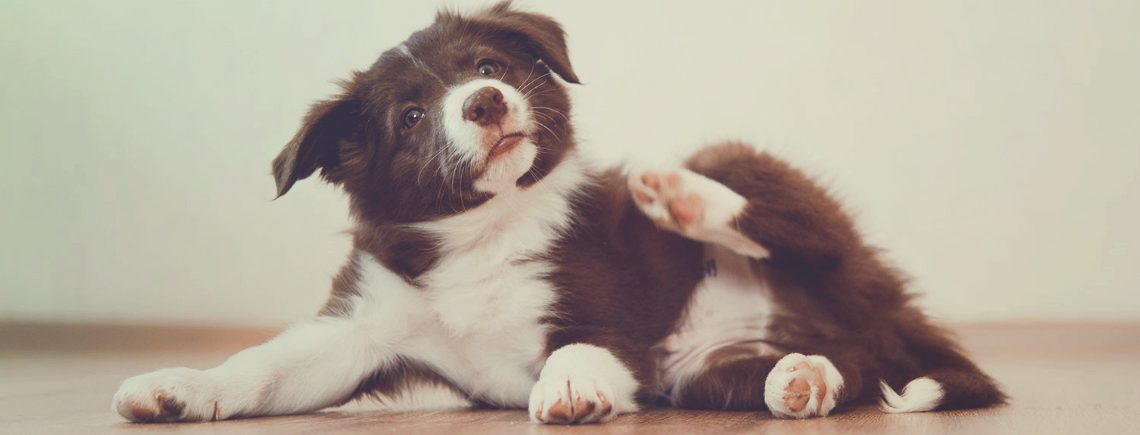My Puppy Has Fleas and Ticks-What Do I Do?
As a new puppy parent, you want to ensure your little pup has a happy and healthy puppyhood. This includes taking him for his vaccinations, exercise and play, socialising with other puppies, and of course, providing preventative flea treatments.
Fleas are tiny yet nasty bugs that like to live in your pup’s coat and feed off his blood from sucking it through the skin. Recognising the signs of a flea infestation is important so you can get rid of them and prevent them from returning.
Signs Your Puppy Has Fleas
- Obsessive Itching – Scratching is one of the most common signs that your pup may have fleas. These tiny insects will cause pain to your pet when they bite, but the salivary gland in the flea also produces an irritant for many dogs.
- Flea Dirt – the “flea dirt” that fleas leave behind will almost look like black pepper and can be seen when you part the hair.
- Chewing Around the Tail or Hind Legs – this a common spot where fleas like to hang out so your pup may be trying to bite themselves if they have fleas
- Visible Insects – Although tiny, fleas are a dark reddish-brown colour can be visible on lighter colour coats, particularly if your dog has a lot of fleas.
- Patchy Hair Loss- particularly around the back of the neck or the tail
- Lethargy and loss of energy, especially in cases of extreme infestation.
- Flea eggs (small white specks) in the fur

Did you know?
Fleas can take up to 15 times their own weight in blood. Dogs may develop anaemia due to the loss of blood. Puppies are especially at risk of this happening. Signs of anaemia include lethargy and pale gums.

What To Do If Your Puppy Has Fleas
Administering a flea treatment is a good way to deal with fleas if they have already been present. It is important to note however that using some flea treatments on young puppies can be harmful. It is essential to learn how to use these treatments correctly to efficiently protect your puppy against fleas.
If your puppy has a bad infestation of fleas, consult with your vet immediately and they can recommend the best course of action for you to take. Thankfully, in most cases, getting rid of fleas is reasonably straightforward – although it will take a little work.
- Treat your dog with a spot-on treatment
- Using a flea comb to brush through the coat to remove dead fleas, larvae and eggs
- Bathing your dog in a skin soothing shampoo, such as one containing tea-tree oil can soothe the skin and promote healing
- Treat your home to kill any fleas, eggs or larvae that may be present. Wash, or potentially replace, your pet’s bedding. Vacuuming all carpets, furniture and soft furnishings where your pet has been sitting or sleeping is also really important.
Treating Ticks
When a tick bites a puppy and begins feeding, its body will augment, and swell like a leathery balloon. Its head is usually found buried beneath the puppy’s skin. Ticks can also be found all over your pup’s body, so make sure to give a thorough examination of your puppy after you think he has been exposed to one.
Symptoms of Tick Bites on Puppies
The best indicator that your puppy may have ticks is when you locate a balloon-like creature sucking his blood. However, if you can’t find one, the tick may have fallen off, and could show up as a minor skin irritation or an infection. Significant blood loss from tick bites can also lead to anaemia.
Preventing Fleas and Ticks in Your Puppy
The simplest way to protect your pup from getting fleas and ticks is to avail of a regular preventative treatment which can be applied to your pet’s coat once a month.
There are range of options available and our team in-store are available to help you to find the one that is most suitable to your pet’s needs.
Join the Petmania Puppy Club
Get exclusive access to discounts, care advice and step-by-step guidance through your puppy’s first year.


